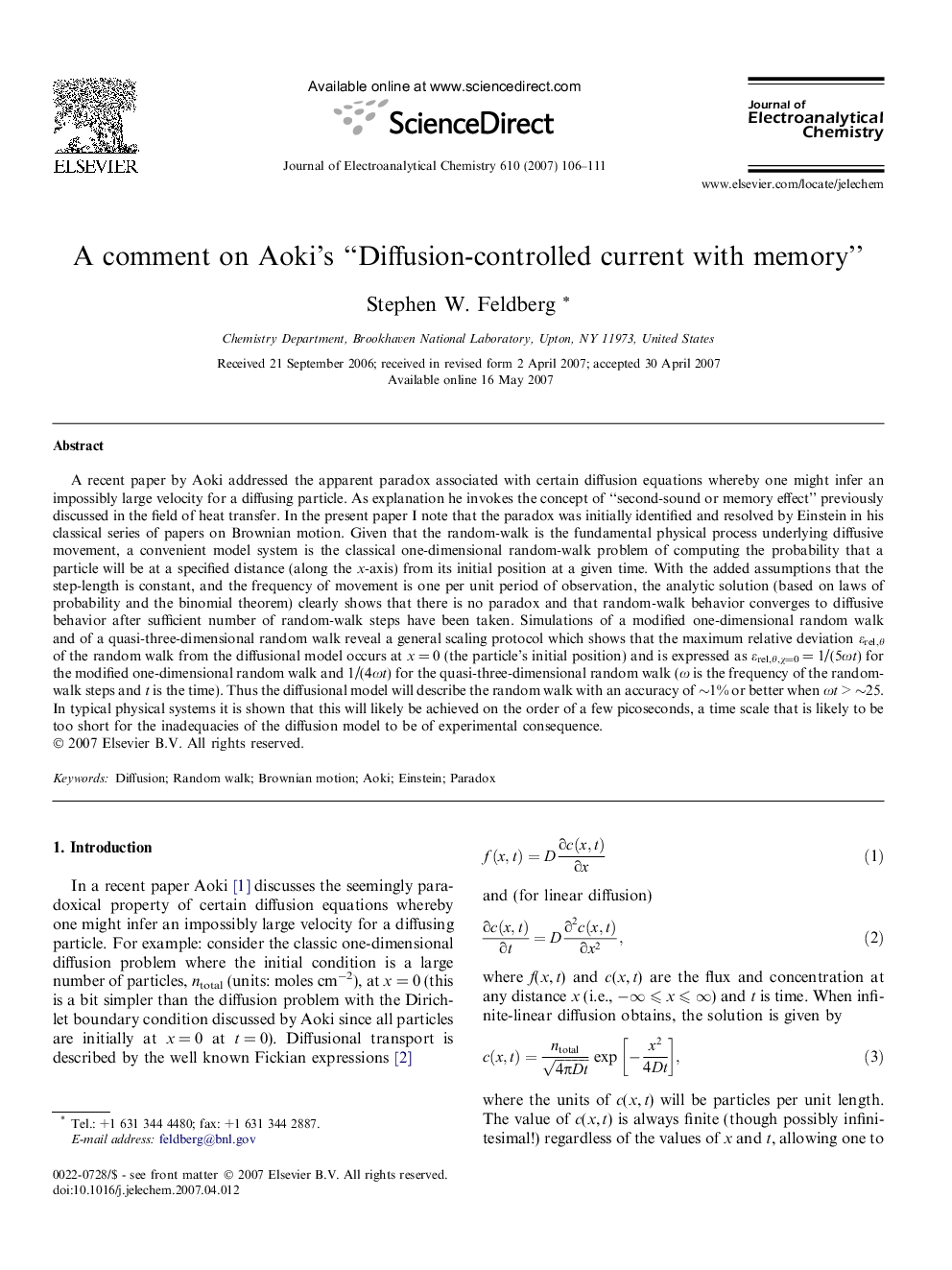| Article ID | Journal | Published Year | Pages | File Type |
|---|---|---|---|---|
| 220793 | Journal of Electroanalytical Chemistry | 2007 | 6 Pages |
A recent paper by Aoki addressed the apparent paradox associated with certain diffusion equations whereby one might infer an impossibly large velocity for a diffusing particle. As explanation he invokes the concept of “second-sound or memory effect” previously discussed in the field of heat transfer. In the present paper I note that the paradox was initially identified and resolved by Einstein in his classical series of papers on Brownian motion. Given that the random-walk is the fundamental physical process underlying diffusive movement, a convenient model system is the classical one-dimensional random-walk problem of computing the probability that a particle will be at a specified distance (along the x-axis) from its initial position at a given time. With the added assumptions that the step-length is constant, and the frequency of movement is one per unit period of observation, the analytic solution (based on laws of probability and the binomial theorem) clearly shows that there is no paradox and that random-walk behavior converges to diffusive behavior after sufficient number of random-walk steps have been taken. Simulations of a modified one-dimensional random walk and of a quasi-three-dimensional random walk reveal a general scaling protocol which shows that the maximum relative deviation εrel,θ of the random walk from the diffusional model occurs at x = 0 (the particle’s initial position) and is expressed as εrel,θ,χ=0 = 1/(5ωt) for the modified one-dimensional random walk and 1/(4ωt) for the quasi-three-dimensional random walk (ω is the frequency of the random-walk steps and t is the time). Thus the diffusional model will describe the random walk with an accuracy of ∼1% or better when ωt > ∼25. In typical physical systems it is shown that this will likely be achieved on the order of a few picoseconds, a time scale that is likely to be too short for the inadequacies of the diffusion model to be of experimental consequence.
